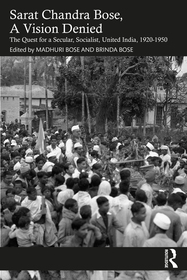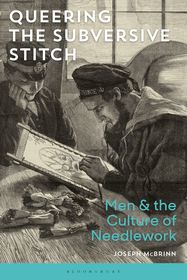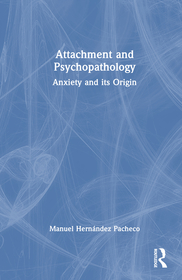
Graeco-Roman Horror and its Modern Reception
Unleashing Classical Dread
Series: Routledge Monographs in Classical Studies;
- Publisher's listprice GBP 145.00
-
69 273 Ft (65 975 Ft + 5% VAT)
The price is estimated because at the time of ordering we do not know what conversion rates will apply to HUF / product currency when the book arrives. In case HUF is weaker, the price increases slightly, in case HUF is stronger, the price goes lower slightly.
- Discount 10% (cc. 6 927 Ft off)
- Discounted price 62 346 Ft (59 378 Ft + 5% VAT)
Subcribe now and take benefit of a favourable price.
Subscribe
69 273 Ft

Availability
Not yet published.
Why don't you give exact delivery time?
Delivery time is estimated on our previous experiences. We give estimations only, because we order from outside Hungary, and the delivery time mainly depends on how quickly the publisher supplies the book. Faster or slower deliveries both happen, but we do our best to supply as quickly as possible.
Product details:
- Edition number 1
- Publisher Routledge
- Date of Publication 15 December 2025
- ISBN 9781041132233
- Binding Hardback
- No. of pages276 pages
- Size 234x156 mm
- Language English
- Illustrations 15 Illustrations, black & white; 15 Halftones, black & white 700
Categories
Short description:
This volume introduces a fresh exploration of Classical literature, examining its engagement with personal or collective tragedy, horrific events, and fear-inflicting episodes. It explores the different ways fear, terror, and horror have been manifested in Graeco-Roman culture and their reception.
MoreLong description:
This volume introduces a fresh exploration of Classical literature, examining its engagement with personal or collective tragedy, horrific events, and fear-inflicting episodes. It explores the different ways fear, terror, and horror have been manifested in Graeco-Roman culture and their reception.
While previous studies often examine physiological and psychological reactions to horror, fear and dread in classical literature and its reception (in fiction and the performing arts) separately, this volume connects these concepts into a broader, unified framework, exploring their presence in both classical antiquity and modern fiction. The individual chapters introduce a new theoretical and conceptual framework for the growing field of Horror Studies as applied to the classical world, and cover its application in a broad range of ancient interpretations and modern media, from Greek tragedy, Roman drama and poetry, myth and Etrurian daemons, to modern Spanish theatrical receptions, animation, Lovecraft and The Haunting of Bly Manor. It examines themes such as body horror, haunted spaces, and suspense in the Graeco-Roman tradition and its modern reinterpretation, expanding the scope of traditional scholarship and providing fresh insight into the genre in classical literature and culture.
The book serves as a valuable resource for students and scholars interested in the emotions and Horror Studies in classical antiquity, and in classical reception. It will also be of interest to those working in the fields of Literary Criticism, Comparative Literature, Cultural Studies, and Classical Archaeology, who will encounter a novel exploration of classical themes and their reconceptualization in pop culture as well as in the visual and performing arts.
Table of Contents:
Introduction: Unleashing Classical Dread Part 1: Violence and the Appeal of Horror 1. Horrific Facts over Horrific Fictions: Ancient Interventions into Horror’s Appeal 2. A Morbid Taste for the Suffering Girl: Cultural Roots of Gore Scenes in Ancient Greek Novel 3. Violence and Forgetting: Traces of Greek Mythology in Flanagan’s Manor Part 2: Daemons, Monsters, and other Fantastic Creatures 4. From Terrifying to Comforting: A Brief Study of Underworld Daemons in Etruria 5. Laughing and/or Fearing the Witch: Exploring Horace’s Canidia & The Monstrous-Feminine 6. “That limitless Mind”: Yog-Sothoth and the reception of Hermetic γνῶσις in H.P. Lovecraft’s fiction Part 3: Altering Human Condition: Death and Necromancy 7. The Basel Dancers (BS 415): A Tragic Chorus Pleading with the Ghost of Patroclus? 8. Dead Men Do Tell Tales: Lucan’s Necromancy Recentered 9. Reworking the Horror of War and Death in Contemporary Spanish Theatre: The “Impossible Heroism” of Numantia and Saguntum Part 4: Body Horror and Spectatorship 10. Cannibals, Amazons, and the Male Gaze: Horror and Horror Cinematography in Imperial Greek Epic 11. Horresco intuens: Body Horror, Embodied Spectatorship, and the Extispicium of Seneca’s Oedipus 12. “Convert of Die”: The Horror of Cannibalism in Blood of Zeus and Graeco-Roman Mythology Part 5: Fear and Suspense 13. “Don’t Go in There!” Forms of Fear and Suspense in Aeschylus 14. Knives and Masks: Agency as a Suspense Device from Greek Tragedy to Slasher 15. Lucian’s Lies and Trimalchio’s Truths: Memorates and Credibility in The Lover of Lies and the Satyricon
More






